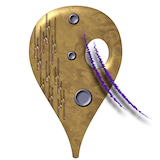Posts From 2013
(See recent posts or posts from: 2024 2023 2022 2021 2020 2019 2018 2017 2016 2015 2014 2013 2012 2011 2010 2009 2008)
- December 2013
-
(2013-12-12) Zarfplan: Mid-December4 comments (latest 4 days later)
-
(2013-12-01) Zarfplan: November2 comments (latest 23 hours later)
- November 2013
-
(2013-11-19) Emergent gameplay vs whatever the other kind is13 comments (latest 2014-01-10)
-
(2013-11-09) The first Seltani Age jam!3 comments (latest 11-24)
- October 2013
-
(2013-10-31) Zarfplan: October -- goodbye sunlight2 comments (latest 7 days later)
-
(2013-10-17) That Cyan Kickstarter: Obduction9 comments (latest 11-13)
-
(2013-10-02) Zarfplan: The eidolons of September
- September 2013
-
(2013-09-25) RealMyst update news14 comments (latest 2014-06-15)
-
(2013-09-17) IF Gathering 2013, quick notes1 comment (straightaway)
-
(2013-09-03) Zarfplan: August report
- August 2013
-
(2013-08-20) Seltani: an introduction
- July 2013
-
(2013-07-30) Zarfplan: summer, July, occasional rainbows
-
(2013-07-16) Bitcoin and MMO-RPGs: somebody get on this13 comments (latest 2014-05-08)
-
(2013-07-01) Zarfplan: Seltani, or what I did in June5 comments (latest 07-20)
- June 2013
-
(2013-06-02) Zarfplan: May (plus a little) progress
- May 2013
-
(2013-05-02) Boston summer IF meetup!7 comments (latest 07-24)
- April 2013
-
(2013-04-28) Zarfplan: April progress3 comments (latest 15 hours later)
-
(2013-04-19) Time for the decennial definitional post7 comments (latest 2 days later)
- March 2013
-
(2013-03-31) Zarfplan: March is a five-letter word
-
(2013-03-01) Zarfplan: February is short1 comment (12 hours later)
- February 2013
-
(2013-02-15) The longer than I expected Versu post1 comment (2 days later)
-
(2013-02-14) Interactive and text-based game news, whoa, lots
- January 2013
-
(2013-01-31) Zarfplan: January of a new year
-
(2013-01-21) Riven news post
-
(2013-01-03) Zarfplan: December (looking back from 2013)2 comments (latest 01-26)

